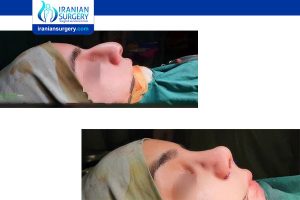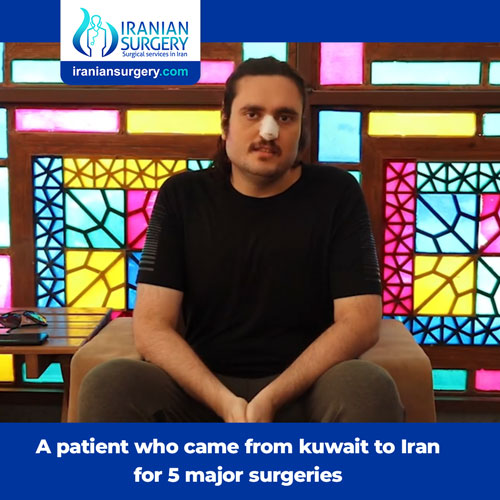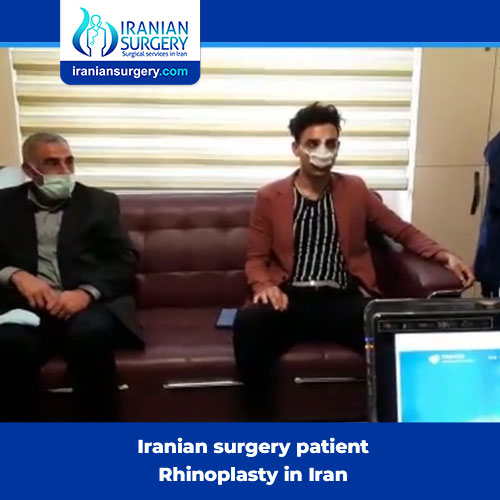Open Rhinoplasty
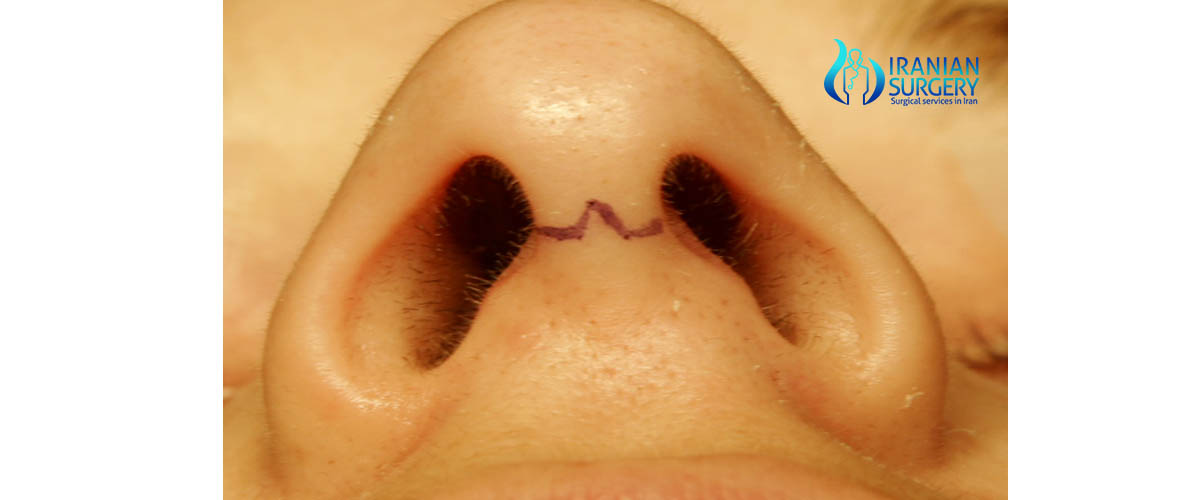
Open rhinoplasty procedure
What is an Open Rhinoplasty?
An open rhinoplasty is used to treat the nasal tip and middle portion of the nose. It involves the use of a small bridging incision to link incisions to the right and left nostrils. The bridging incision allows the nasal skin to be folded upward, thereby providing full access to the lower nasal skeleton.
Open rhinoplasty is generally recommended in situations where patients display the following characteristics:
. Thick or thin nasal skin
. Septal perforations or a deviated nasal septum
. Cleft lip and palate involving the nose
. Nasal tumors
. Failure of an earlier rhinoplasty procedure, whether open or closed
. Internal dysfunction of nasal structures
. Extensive augmentations to the various structures of the nose, especially internally
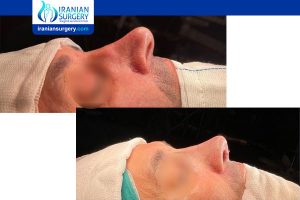
- Read more about : Open rhinoplasty vs closed rhinoplasty
- Read more about : Closed rhinoplasty surgery
- Read more about : How much does rhinoplasty cost in Iran?
- Read more about : Revision rhinoplasty in Iran
- Read more about : bulbous nose rhinoplasty
- Read more about : Ethnic Rhinoplasty in Iran
Before Open Rhinoplasty
Preparing for Open rhinoplasty
Before scheduling Open rhinoplasty surgery you should send your medical records to rhinoplasty surgeon. The most important question your doctor will definitely ask you is about your motivation and goals of surgery. Your doctor will also ask questions about your medical history — including a history of nasal obstruction, surgeries and any medications you take. If you have a bleeding disorder, such as hemophilia, you may not be a proper candidate for nose job surgery in Iran.
What important factors should I notice before doing Open Rhinoplasty in Iran?
- Get lab. It is important that we ensure our patients are healthy enough to have surgery so we should ask our patients to have a hemoglobin test.
- Take certain medications or adjust your current medications.
- Stop smoking 2 weeks before and after surgery.
- Avoid taking aspirin, anti-inflammatory drugs and herbal supplements as they can increase bleeding.
- Limit sun exposure for 2 weeks
- Do need eat or drink anything 6 hours prior
- Purchase all recovery items beforehand
What are the advantages of open rhinoplasty?
. Open rhinoplasty has some advantages over the closed approach, which are as follows.
. Since the nasal structure is completely revealed, the surgeon has better access to the underlying structure and thus more freedom to reshape the nose as the patient desires.
. The stabilization of the nose after surgery is easier in open rhinoplasty than closed rhinoplasty.
. Most surgeons practice open rhinoplasty. Therefore, your chance to find a good surgeon for open rhinoplasty is greater.
What are the Disadvantages of open rhinoplasty?
The main drawbacks of open rhinoplasty are as follows:
. Open rhinoplasty is lengthier and more invasive than closed rhinoplasty, so the recovery time will be a little longer and it takes more time for the swelling and bruising to disappear.
. A very small scar might remain on your nasal columella, though only visible when you tilt your head back.
Am I a Good Candidate for Open Rhinoplasty?
Good candidates for open rhinoplasty include:
. An ideal candidate for open rhinoplasty is a person with a complex anatomy and the reconstruction is carried out using multiple tissue and cartilage grafts to the tip of the nose.
. Open rhinoplasty benefits someone with significant deformities of the nasal soft tissues and cartilage.
. Open rhinoplasty candidates are people with a bridge or bulbous tip on their nose or someone with breathing issues because of the structure of the nose.
. The ideal candidate for open rhinoplasty will most likely require more gentle finesse procedures or more dramatic adjustments to structure and shape their nose.
Open Rhinoplasty Risks and Side effects
Open Rhinoplasty surgery risks include:
. Anesthesia risks
. Infection
. Poor wound healing or scarring
. Change in skin sensation (numbness or pain)
. Nasal septal perforation (a hole in the nasal septum) is rare. Additional surgical treatment may be necessary to repair the septum but it may be impossible to correct this complication.
. Difficulty breathing
. Unsatisfactory nasal appearance
. Skin discoloration and swelling
. Possibility of revisional surgery
During Open Rhinoplasty
How is Open Rhinoplasty performed?
An open rhinoplasty procedure allows for the best visualization of the nasal structures when correcting both cosmetic and functional concerns of the patient.
During an open rhinoplasty, an incision will be made at the columella, just beneath the tip of the nose. The nose will then be retracted backwards, dissecting the nose cartilage with care being taken to not incise the medial crura, the cartilage that separates the nostrils. The flap will be raised off of the nose for maximum exposure and work can now be done to reshape the nasal tip, bridge, nostrils, or septum repair. Once completed, the flap will be redraped over the bone framework and external contouring and shaping is completed. The incision will be closed with sutures and an external splint or cast will be placed over the nose.
After Open Rhinoplasty
Recovery timetable
Approximate recovery after Open rhinoplasty is as follows:
. Day 1 Return home. Use cool compresses for 24 hours. Some swelling and bruising, mild discomfort. Change mustache dressing as needed (often 10 to 20 times).
. Day 2-3 maximum bruising and swelling.
. Days 5-14 External stitches removed or dissolving. Internal and external nasal dressings removed by Doctor. Bruising going away.
. Week 2-4 much of swelling has begun to go away. Breathing better.
. 1 Year Enjoy your final result
Flying after Open rhinoplasty
A patient must not fly for at least 5 days after the surgery. While unlikely, the possibility that you will have a nosebleed during the flight, which could be an emergency situation, is avoided. It is still not recommended to fly for an additional week (in total 2 weeks), but many patients cannot stay in town for that long of a period. If you must fly during the second week of your recovery, it is important to take Sudafed and spray a nasal decongestant (Afrin or other) prior to taking off. If not, the pressure changes during the flight may be very painful. It is also typical to have renewed swelling after the flight, which will last about 1-2 days. All of these issues are not concerning if you are planning to travel by car or train.
Out of town patients should plan to stay a few days after the surgery at a hotel. They can travel and fly back home after splint removal at 5-7 days. Physical activity should be limited for 10-14 days. It usually takes about 6 weeks before the patient can exercise again without discomfort. High-risk contact sports should be avoided for 3 months.
How can I clean my nose after Open rhinoplasty in Iran?
4 Ways to clean your nose after Open rhinoplasty in iran are as follows:
. Q-tip and hydrogen peroxide
. Saline rinse
. Removing blockages
. Use a moist towelette
Read more about : cleaning out side of nose after rhinoplasty
- Rhinoplasty in Iran
- Rhinoplasty in Iran cost
- Revision Rhinoplasty in Iran
- Closed Rhinoplasty in Iran
- Open Rhinoplasty in Iran
- Before Rhinoplasty in Iran
- During Rhinoplasty in Iran
- After Rhinoplasty in Iran
- The common methods used in rhinoplasty in Iran
- Flying after Rhinoplasty in Iran
- Risks of Rhinoplasty in Iran
- Steps of Rhinoplasty in Iran
- Cleaning outside of nose after Rhinoplasty in Iran
- Best age for Rhinoplasty surgery
- Rhinoplasty Recovery
- Features of a good Rhinoplasty surgery in Iran
- Infective complications related to Rhinoplasty surgery
10 common question about rhinoplasty
- Plastic surgery in Iran
- Rhinoplasty
- Face lift
- Facial plastic surgery
- Lip augmentation
- Ear pinning
- Blepharoplasty
- Neck lift surgery
- Chin lift surgery
- Liposuction
- Abdominoplasty (tummy tuck)
- Body sculpting
- Arm Lift
- Brazilian Butt Lift
- Breast Augmentation
- Breast Lift
- Breast implant
- male breast reduction ( gynecomastia )
- sex reassignment surgery ( sex change )
- Vaginoplasty
- labiaplasty
- Hair transplant for male
- Female hair transplant
- Reconstructive surgery
- Septoplasty
- Breast reconstruction
- Breast reduction
- Cleft lip and palate repair


